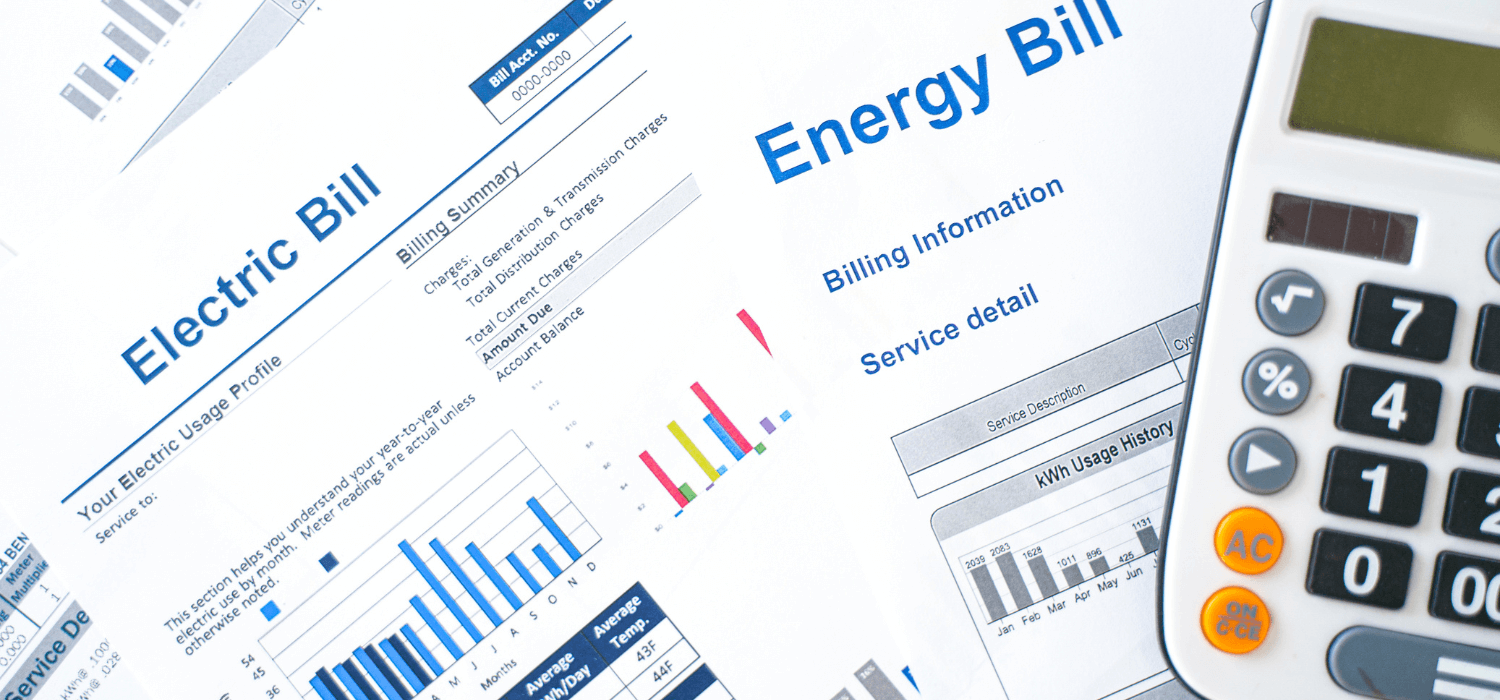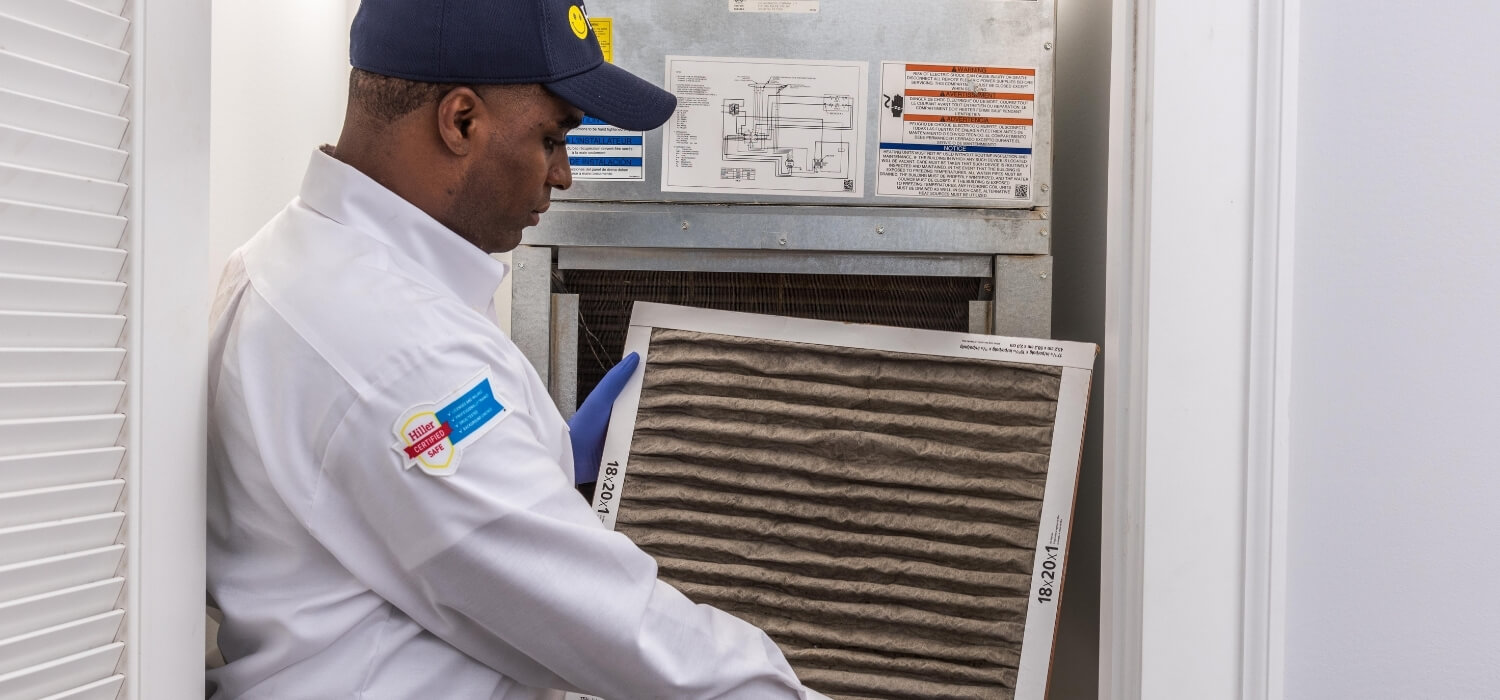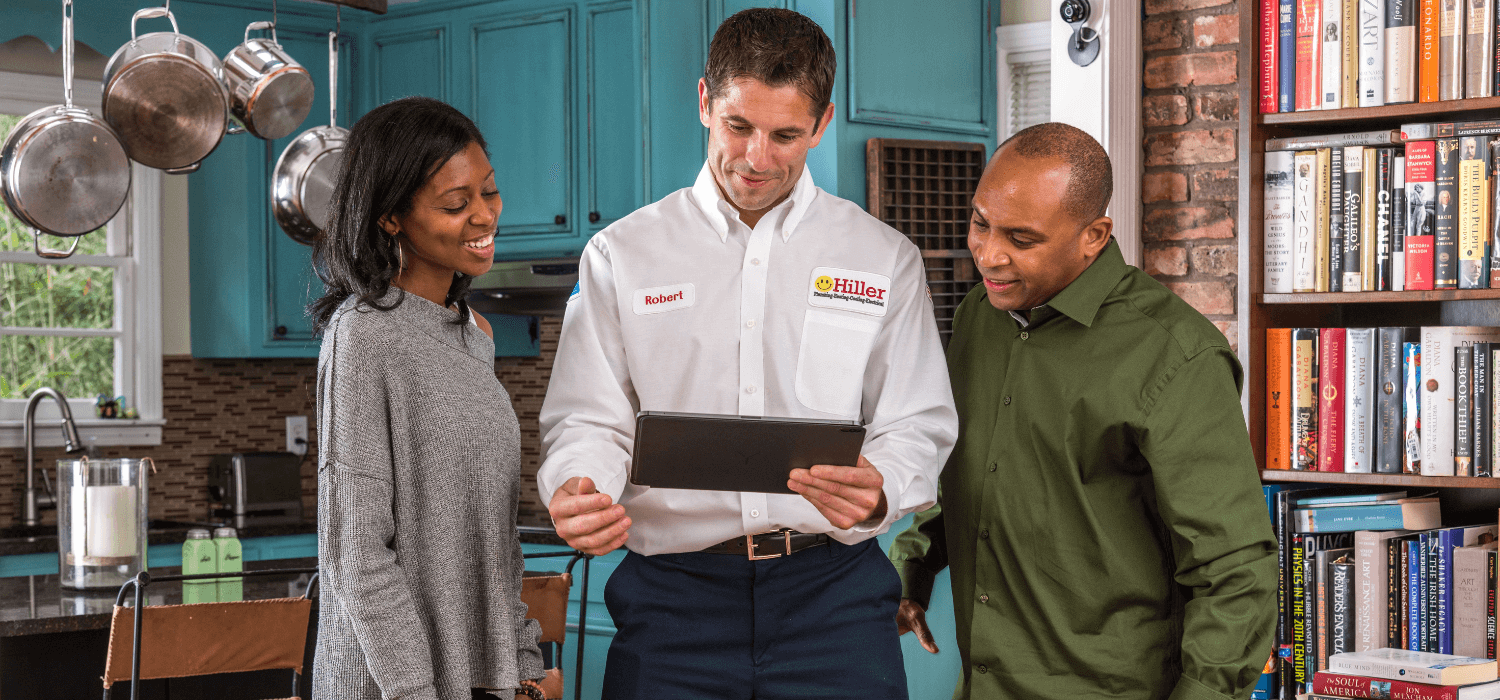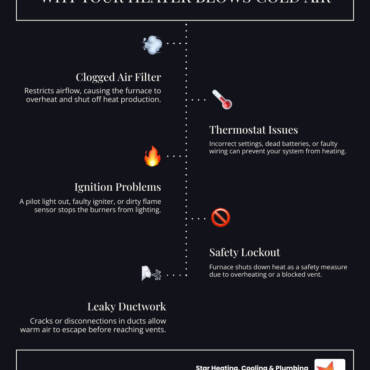Posted October 17, 2025
Have you ever noticed that enigmatic hum emanating from your furnace? It’s the type of subtle yet persistent sound that can leave homeowners perplexed, unsure if it’s just the house settling or if there’s something more significant at play.
Those furnace hums and other peculiar noises could be indicative of underlying issues that might result in costly repairs or a chilly home when you least expect it.
Together, we’ll embark on a journey to decode your heating system and unravel the mysteries of furnace humming. From the quiet midnight hum to the abrupt clang that startles you awake, understanding what your furnace is trying to communicate is your first step toward maintaining a warm and peaceful home.
Furnace Humming: Identifying the Noise
Homeowners often find themselves in a peculiar predicament when they encounter strange sounds emanating from their furnaces. While it might be tempting to dismiss these noises as mere quirks of the system or the house settling, accurately identifying furnace noises is crucial for maintaining a safe and efficient heating system.
Importance of Identification
Accurately identifying furnace noises is imperative. It serves as a diagnostic tool, enabling homeowners to distinguish between benign operational sounds and potentially severe issues.
By recognizing and describing the specific type of noise, homeowners can communicate effectively with HVAC professionals, facilitating quicker and more precise repairs. Early detection of unusual furnace noises can prevent minor problems from escalating into costly breakdowns, ensuring a warm and comfortable home throughout the winter months.
Understanding the Causes
Strange furnace noises can be unsettling, but they often point to underlying issues and malfunctions within your heating system. Identifying the root causes of these noises is vital for resolving problems promptly and ensuring the safety and efficiency of your furnace.
Humming Noises
Humming noises are often due to loose parts like blower wheels or motor mounts. These components may vibrate, causing the humming sounds. Inefficient blower motors can also generate humming noises, resulting from excessive friction and strain. This can lead to overheating, reduced furnace lifespan, and higher energy consumption.
Banging and Clanging
Expanding and contracting ducts due to temperature fluctuations are common culprits behind banging and clanging noises. While these sounds can be harmless, they may occasionally signal problems like blocked vents or restricted airflow.
Ignition problems, such as delayed or erratic ignition sequences, can result in loud banging sounds and may cause the furnace to shut down unexpectedly. Ignoring these issues can lead to increased energy consumption and potential safety hazards.
Whistling and Whirring
Whistling noises typically signify air leaks in the ductwork, reducing heating efficiency and allowing contaminants into the system, which can degrade indoor air quality.
Whirring noises can also be attributed to fan blade issues, such as misalignment or wear and tear. Inefficient fan blades hinder the circulation of warm air, causing your furnace to work harder and consume more energy, ultimately leading to higher energy bills.
Impact on Furnace Efficiency and Safety
Understanding these issues and their potential impact on your furnace’s efficiency and safety is essential. Ignoring humming, banging, whistling, or whirring noises can lead to reduced heating efficiency, higher energy bills, and, in some cases, safety risks.

Unresolved problems can result in furnace breakdowns during the coldest days of the year, leaving you without heat and incurring costly repair bills. Addressing these issues promptly not only maintains your furnace’s performance but also ensures the safety and comfort of your home.
Safety First: Shutting Down the Furnace
When it comes to dealing with furnace issues, ensuring safety is paramount. Before you even think about inspecting or repairing your furnace, it’s crucial to take the appropriate steps to shut it down safely.
The furnace, after all, is a powerful appliance that uses gas or electricity to generate heat, and improper handling can lead to hazardous situations. This section outlines the essential safety precautions and the proper procedure for turning off your furnace.
Procedure for Safely Shutting Down the Furnace
Begin by familiarizing yourself with your furnace. Locate the owner’s manual and the emergency shut-off switch. The manual provides valuable information about the shutdown process specific to your furnace.
Lower the thermostat to a temperature below the current room temperature. This will prevent the furnace from turning on while you work on it. Find the emergency shut-off switch, typically located near the furnace. This switch is designed to completely cut power to the furnace.
Once you’ve found the emergency shut-off switch, turn it to the “off” position. This will disconnect electrical power from the furnace, ensuring it won’t activate during your inspection or repair.
For gas furnaces, it’s essential to also turn off the gas supply. Locate the gas shut-off valve near the furnace or on the gas line leading to the furnace. Turn the valve to the “off” position. If you smell gas, leave the area immediately and contact your gas company.
Give the furnace some time to cool down. It can remain hot even after shutting off the power. Allow at least 30 minutes for the heat exchanger and other components to cool to a safe temperature.
DIY Troubleshooting
Homeowners can often save time and money by addressing some furnace issues on their own. Before calling in a professional technician, it’s worth conducting some basic DIY troubleshooting to identify common problems and potentially resolve them.
Inspecting the Air Filter
One of the simplest and most effective troubleshooting steps is checking the furnace’s air filter. A clogged or dirty filter can restrict airflow, leading to reduced efficiency and even overheating. Locate the filter near the blower motor, typically in the return air duct, and assess its condition. If it’s dirty, replace it with a new one. A clean filter ensures proper airflow and efficient heating.

Thermostat Settings
A common issue that can mimic furnace problems is incorrect thermostat settings. Ensure that the thermostat is set to “Heat” mode, and the desired temperature is higher than the current room temperature.
Also, verify that the thermostat’s batteries are functional, as dead batteries can cause it to malfunction.
Check Circuit Breakers and Electrical Connections
If the furnace isn’t responding, it’s essential to inspect the circuit breakers in your electrical panel. A tripped breaker can interrupt power to the furnace. Reset any tripped breakers related to the furnace.
Additionally, examine the furnace’s electrical connections. Loose or frayed wires can cause electrical issues. Turn off power to the furnace and inspect the wiring. Tighten any loose connections and replace damaged wires.
Pilot Light Inspection
For gas furnaces with a pilot light, check if the pilot light is lit. If it’s out, follow the manufacturer’s instructions to relight it. If you’re unfamiliar with this process, consult your furnace manual or consider professional assistance. A reliable pilot light is crucial for the furnace to function correctly.
Blower Motor Assessment
Listen for the sound of the blower motor running. If you don’t hear it or it’s making unusual noises, it might be a sign of a problem. Check for any obstructions around the blower motor and the fan. Remove any debris that could impede its operation.

Inspect Vents and Air Registers
Blocked or closed vents and air registers can disrupt the distribution of warm air. Ensure that all vents and registers in your home are open and unobstructed by furniture or other objects. Adequate airflow is necessary for the furnace to function efficiently.
Examine Gas Supply (For Gas Furnaces)
If you have a gas furnace and it’s not producing heat, check the gas supply. Ensure the gas shut-off valve is in the open position. If you’ve recently had gas service or there’s been work on the gas line, it’s possible the valve was accidentally closed.
Regular Maintenance and Furnace Repair
Finally, consider a schedule of regular maintenance for your furnace. Cleaning, lubricating, and inspecting components like the blower motor, burners, and igniter can prevent future issues. While some maintenance tasks can be handled by homeowners, it’s often a good idea to schedule annual professional maintenance to keep your furnace in peak condition.
When to Hire HVAC Service Companies
While DIY troubleshooting can solve many common furnace issues, there are times when calling in a professional HVAC technician is not only advisable but necessary. Knowing when to seek expert help can save you from potential hazards and ensure your furnace operates efficiently.
When to Hire a Professional HVAC Technician
You might be wondering when the rattling noise coming from your furnace becomes a serious cause for concern. Here are some situations where you should consider bringing in the pros.
Gas Leaks or Strange Odors
If you smell gas, such as a rotten egg odor, it’s crucial to immediately evacuate your home and call the gas company. Gas leaks are a serious safety hazard that should only be handled by professionals.

Electrical Issues
Furnaces contain complex electrical components. If you notice flickering lights, burnt wires, or other electrical problems, it’s best to call a technician to prevent electrical hazards.
Furnace Won’t Start
If your furnace refuses to start, despite checking the thermostat, circuit breakers, and pilot light, it’s a sign of a more complex issue that requires professional diagnosis.
Unusual Sounds
While some odd furnace noises can be resolved through DIY methods, persistent, loud, or unusual sounds may indicate mechanical problems best handled by a technician.
Inadequate Heat Production
If your furnace is running but not providing sufficient heat, or if you experience uneven heating in different parts of your home, a technician can diagnose and rectify the issue.
Repeated Cycling
If your furnace cycles on and off frequently, it might indicate a problem with the thermostat, blower motor, or another component that should be addressed by a professional.
Advantages of Professional Expertise
Bringing in a professional HVAC technician offers several key advantages. The foremost among these is safety. Professionals are trained to handle potentially dangerous situations, such as gas leaks and electrical issues, with care and competence.
Expert diagnosis is another significant benefit. HVAC technicians possess the knowledge, skills, and specialized tools to accurately identify the root causes of furnace problems. Their expertise ensures that problems are addressed at their source and not merely treated on the surface.

Efficiency is a vital aspect that professional technicians can enhance. By optimizing your furnace’s operation, they can help you achieve lower energy bills, prolong your heating system’s lifespan, and ensure your home remains comfortable.
Selecting a Reputable HVAC Service Provider
When you decide to hire an HVAC technician, there are several considerations to ensure you choose a reputable service provider. Licensing and certification should be among the first factors you investigate. Ensure the technician holds the necessary licenses and certifications, affirming their compliance with local safety and quality standards.
Closely linked to licensing is insurance. Confirm that the technician is adequately insured to cover any potential accidents or damage that might occur during the course of their repair or maintenance work. Referrals and reviews from friends, family, and online sources can help gauge the reputation and reliability of the service provider. Learning from others’ experiences can provide valuable insights.
The transparency of pricing is paramount. Request written estimates and make certain the service provider is clear about their pricing structure, encompassing both labor and materials costs.
It’s advisable to opt for a service provider that offers emergency services, as furnace issues can arise at any time, often outside regular business hours. Knowing you have access to emergency assistance can provide peace of mind. Lastly, inquire about guarantees and warranties on the technician’s work. This helps ensure that you’re covered if problems persist after the service, holding the technician accountable for the quality of their work.
Find an HVAC Technician Now
Addressing furnace humming is a task of paramount importance for homeowners. Don’t let furnace humming disrupt your peace and comfort-take action for a warm and tranquil home.
Hiller Plumbing is a prominent home service company. We are known for our exceptional HVAC, plumbing, and electrical services. Call us today today to schedule your service.

Daily Promotion
FREE 10-Year Extended Warranty with Generac
Bonus protection for your backup power.
Get Promotion
Whether you require installation, repair, or maintenance, our technicians will assist you with top-quality service at any time of the day or night. Take comfort in knowing your indoor air quality is the best it can be with MOE heating & cooling services Ontario's solution for heating, air conditioning, and ventilation that’s cooler than the rest.
Contact us to schedule a visit. Our qualified team of technicians, are always ready to help you and guide you for heating and cooling issues. Weather you want to replace an old furnace or install a brand new air conditioner, we are here to help you. Our main office is at Kitchener but we can service most of Ontario's cities
Source link



